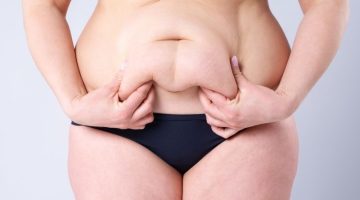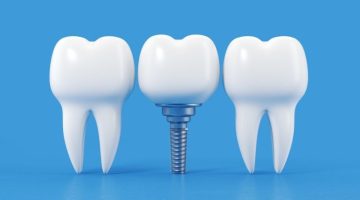Undergoing a hair transplant is a significant step towards restoring your hair and boosting your confidence. However, the post-hair transplantation period is just as crucial as the procedure itself. Proper care and attention during the recovery phase can make a significant difference in the success of the transplant and the quality of your results. In this blog, we will explore the key aspects to consider after your hair transplant, including guidelines for aftercare, potential side effects, and lifestyle adjustments to ensure optimal healing and the best possible hair growth. Whether you’re a few days or a few months post-transplant, following the right steps during this critical period will help you achieve long-lasting and natural-looking results.
Essential Precautions in the First Days
The first days following a hair transplant are crucial for the success of the procedure and the health of your newly transplanted hair follicles. During this time, it is essential to follow specific precautions to ensure proper healing and minimize the risk of complications. One of the most important steps is to avoid touching or scratching the transplanted area, as this can dislodge the grafts and interfere with the healing process. It’s also vital to sleep with your head elevated for the first few nights to reduce swelling and promote blood circulation to the scalp. Additionally, avoid strenuous physical activities, such as heavy lifting or vigorous exercise, for at least a week to prevent increased blood pressure and potential graft dislodgement. Exposure to direct sunlight should be minimized, and wearing a loose, soft hat or scarf can help protect the scalp from harmful UV rays. Following the prescribed medication regimen, including antibiotics and anti-inflammatory drugs, is crucial for preventing infection and managing swelling. By adhering to these guidelines, you will give your hair follicles the best chance to heal properly and start growing effectively.
Nutrition and Lifestyle: Tips for Faster Recovery
Proper nutrition and a healthy lifestyle play a vital role in supporting the recovery process after a hair transplant. Eating a balanced diet rich in vitamins and minerals can help promote faster healing and optimize hair growth. Focus on consuming foods high in protein, such as lean meats, fish, eggs, and legumes, as protein is essential for the regeneration of cells and the production of keratin, the protein that makes up hair. Vitamin-rich foods, particularly those high in vitamin A, C, and E, can improve scalp health and stimulate hair follicles. Zinc and iron are also important for hair growth and recovery, so including foods like spinach, nuts, seeds, and red meat in your diet can be beneficial.
In addition to a nutritious diet, staying hydrated is crucial for healing. Drinking plenty of water helps to maintain healthy blood circulation and ensures the nutrients reach the scalp effectively. A healthy lifestyle that includes adequate sleep is also essential for recovery; proper rest allows the body to repair itself and reduce inflammation. Avoiding smoking and excessive alcohol consumption is highly recommended, as these habits can impair blood flow and slow down the healing process. By combining proper nutrition with a mindful lifestyle, you can support your body’s natural healing mechanisms and promote the growth of your transplanted hair.
Frequently Asked Questions After Hair Transplantation
After undergoing a hair transplant, many patients have questions about the recovery process, results, and what to expect in the coming weeks and months. Here are some of the most frequently asked questions following a hair transplant:
How long does the recovery process take?
Recovery times can vary, but most patients experience significant healing within the first 7 to 10 days. However, it may take several months for the transplanted hair follicles to settle and begin showing visible growth, with full results typically visible after 12-18 months.
When can I wash my hair after the transplant?
It’s important to follow your surgeon’s specific instructions, but generally, you can begin gently washing your hair about 2 to 3 days after the procedure. During the first week, you should avoid scrubbing or applying pressure to the scalp.
Is it normal to experience shedding after the transplant? Yes, shedding is a normal part of the process. In the first few weeks to months after the procedure, the transplanted hair may fall out as the follicles go into a resting phase. New hair growth will typically begin in 3 to 4 months.
Can I exercise after a hair transplant?
It’s advisable to avoid strenuous activities, such as heavy lifting or intense cardio, for at least 7-10 days post-surgery. This is to prevent swelling, bleeding, or dislodging the newly transplanted hair follicles.
Will the transplanted hair look natural?
Yes, if performed by a skilled surgeon, a hair transplant should result in a natural-looking hairline. The transplanted hair grows just like your natural hair, and the result should blend seamlessly with the rest of your hair.
Are there any risks or complications I should be aware of?
As with any surgery, there are potential risks, including infection, scarring, or poor hair growth. Following aftercare instructions and attending follow-up appointments is crucial to minimizing these risks.
Understanding the common questions and concerns after a hair transplant can help you manage your expectations and recovery process, ensuring the best possible outcome. Always consult with your surgeon for personalized guidance and care.
As a result, proper care and a careful recovery process after hair transplantation play a critical role in achieving successful results. While the precautions to be taken in the first days accelerate the healing process, proper nutrition and lifestyle habits also help the hair to grow in a healthy way. Understanding the questions and concerns that may be experienced during the process allows you to spend the healing process more comfortably and safely. After hair transplantation, it is possible to achieve natural and long-lasting results with the right guidance and regular controls.












Leave a Reply